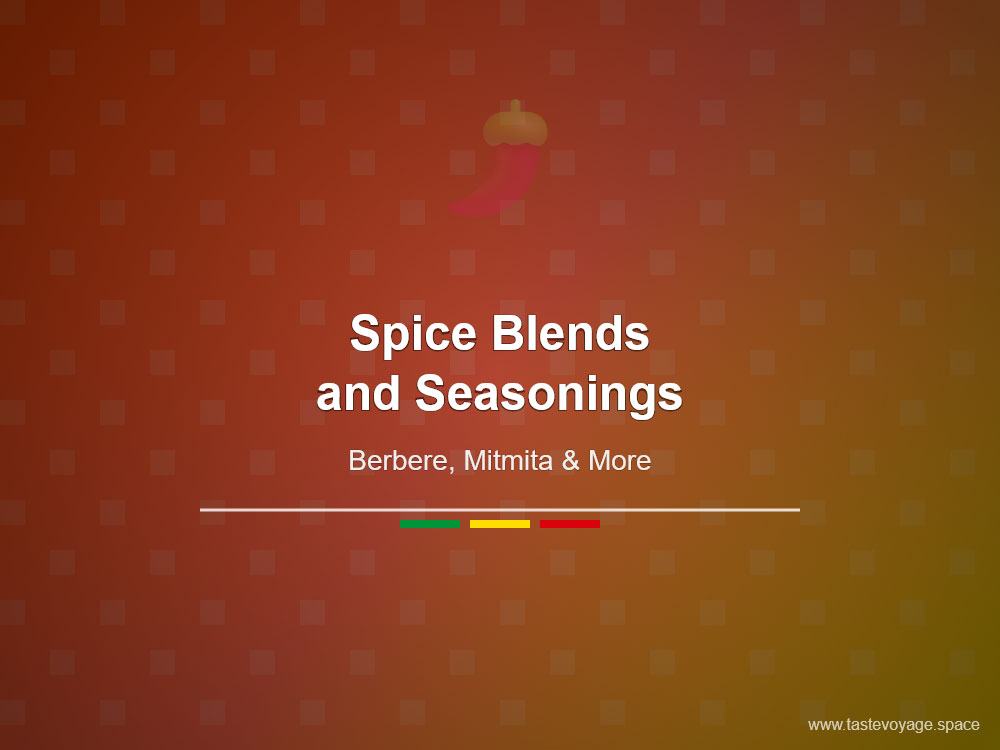Mastering Traditional Ethiopian Spice Preparation Techniques
Travel the World Through Food >> Ethiopian Cuisine>>Spice Blends and Seasonings>> Mastering Traditional Ethiopian Spice Preparation Techniques
Mastering Traditional Ethiopian Spice Preparation Techniques
Discovering the Richness of Traditional Ethiopian Spice Preparation Methods
Ethiopian cuisine is renowned for its vibrant flavors and aromatic spices. At the heart of this culinary tradition lies a profound practice: the preparation of spices that embody Ethiopia’s rich cultural heritage. Understanding the traditional methods of spice preparation reveals much about the country’s history, community values, and culinary artistry.
The Cultural Significance of Ethiopian Spices
In Ethiopia, spices are more than mere seasonings; they are an expression of identity and hospitality. The process of preparing spices is often a communal activity, passed down through generations. It fosters a deep connection to the land and the community, reflecting Ethiopia’s diverse cultural tapestry.
Traditional spice preparation often begins with the careful selection of ingredients. Ethiopian spices like berbere, mitmita, and korarima are crafted with precision, blending various dried herbs, chili peppers, and other native ingredients. These mixtures are integral to many iconic dishes, such as injera with Spicy stews, highlighting their culinary importance.
The Art of Roasting and Grinding
One of the most distinctive aspects of Ethiopian spice preparation is the roasting process. Spices are typically dry-roasted to bring out their full aroma and flavor, a step that requires skill and patience. Roasting enhances the depth and complexity of the spices, contributing to the rich taste profile characteristic of Ethiopian dishes.
Following roasting, spices are ground using traditional tools like mortars and pestles made from stone or wood. This manual process allows cooks to control the texture, whether they prefer a fine powder or a coarser blend. The act of grinding is often a communal event, fostering social bonds and shared traditions.
Creating Signature Spice Blends
Ethiopian Spice Blends are celebrated for their bold, layered flavors. Berbere, perhaps the most famous, combines chili peppers, garlic, ginger, and a mixture of native spices. Each household may have its own variation, tailoring the blend to familial preferences or regional flavors.
Korarima seeds, also known as Ethiopian cardamom, are usually toasted and ground fresh, imparting a fragrant, citrusy aroma to dishes. Mitmita, a fiery blend of chili, cardamom, and salt, adds a spicy kick. The meticulous preparation of these blends underscores the culinary artistry intrinsic to Ethiopian culture.
Preservation and Cultural Continuity
Traditionally, Ethiopian spices are prepared in large quantities and stored in airtight containers, preserving their potency for months. This practice ensures that the flavors remain vibrant and ready to complement daily meals. It also highlights the importance of sustainability and resourcefulness within Ethiopian culinary traditions.
The preparation of spices is often surrounded by rituals and customs that reflect respect for ingredients and a reverence for tradition. Such customs reinforce cultural identity and serve as a bridge connecting past and present generations.
Celebrating Ethiopian Culinary Heritage
The methods of preparing Ethiopian spices are a testament to the country’s rich gastronomic heritage. They exemplify patience, skill, and a deep appreciation for natural flavors. These traditional techniques continue to flourish, inspiring chefs and home cooks alike.
By exploring Ethiopia’s spice preparation methods, we gain a deeper understanding of its culinary soul. Each blend tells a story—of land, community, and history. Embracing these traditions offers a celebration of Ethiopia’s vibrant and enduring food culture.
This article aims to invite you into the fascinating world of Ethiopian spices—an essential element that elevates Ethiopian cuisine to an art form. Whether you’re a food enthusiast or a curious reader, appreciating the cultural depth behind these preparation methods enriches our understanding and admiration of Ethiopia’s culinary legacy.
